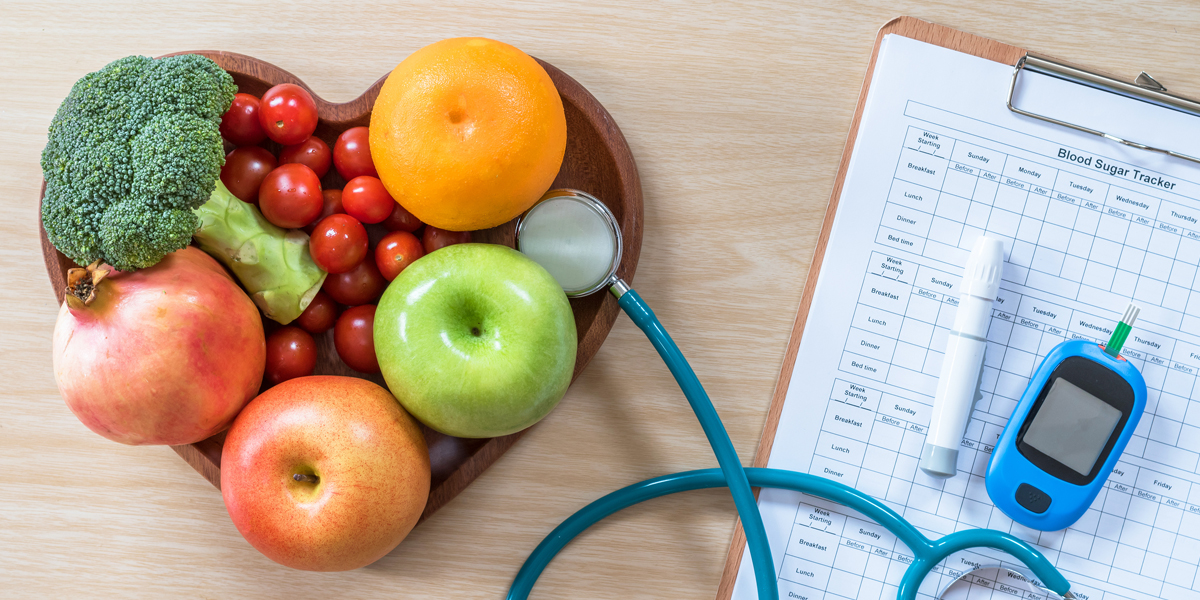Diabetes is a disease that impacts 1 in 5 people in the Philippines. Worldwide, about 537 million adults aged 20 to 79 years old are affected – a number expected to increase by 50% in 20 years. It has afflicted over a million young people who are 19 years old and below, and nearly half of diabetic adults remain undiagnosed due to lack of information about this disease.
READ: What is diabetes and its four common types
Diabetes Management
You may wonder, “How does living with the disease feel like?” Since the causes of type 1 and 2 diabetes differ, so do their management. People with type 1 diabetes, where the pancreas can no longer produce insulin. The patient will have to administer the hormone externally for energy and blood glucose control. Doctors will pick from 5 types of insulin – rapid-acting, short-acting, intermediate-acting, long-acting, and premix – and recommend their dose and frequency.
While type 2 diabetes may also require insulin at a later stage, treatment usually starts out with dietary and lifestyle intervention (improving their eating habits and embarking on an exercise program).
If changes in diet becomes inadequate in managing blood sugar levels, then oral medication will be prescribed to manage blood sugar levels.
Diabetic Diet8
Diabetic patients should follow the treatment solutions prescribed by their doctor to actively manage the disease and reduce the risk of complications.
All patients should follow dietary treatment. As different people have varying calorie requirements, patients should consult a registered dietician to design a suitable menu for the management of the disease and stabilizing glucose. The general guidelines are as follows:
Have a balanced diet and have your meals at a regular time. Also, dieticians and doctors may also advise patients “eat less per meal but have more meals”. This helps in stabilizing blood glucose levels.
Your diet should have a healthy and appropriate mix of carbohydrates. Carbohydrates should be approximately 50% of the total calorie intake. For example, around 750 kcal of calories (equivalent to around 188g carbohydrate, i.e., of 18 - 19 portions of carbohydrate exchange) to be produced by carbohydrate in a 1500 kcal menu.
The above carbohydrate exchange should be distributed evenly in main meals and snack time. 1 portion of carbohydrate exchange is equivalent to 10g of carbohydrate.
Patients can choose suitable number of grains, rhizome vegetables, fruits, and dairy according to the “carbohydrate exchange” method.
Dietary counselling would include emphasis on the avoidance of food and drinks that are rich in sugar or additional sweeteners to prevent surge of glucose as much as possible.
Foods that are high in saturated fat content such as animal organs should also be avoided to protect the cardiovascular system.
Abstinence of alcohol should also be followed as alcohol consumption can affect the efficacy of drugs and may lead to low blood glucose (hypoglycemia). In unavoidable circumstances, men and women should limit themselves to 2 and 1 portions respectively. Each portion works out to be 300ml of beer, 150ml of red wine, or 45ml of spirit, depending on one’s choice of a nightcap.
Oral Anti-Diabetic Drugs (OAD)8
The prescriptions of oral anti-diabetic drugs will be given by doctor according to the body condition, drug allergies (if any) and condition of blood glucose control of individual patient.
| Type | Function | Example |
| Sulfonylureas | Stimulate the insulin secretion of pancreas | Tolbutamide Gliclazide Gliclazide MR Glimepiride Glipizide |
| Biguanides | Reduce the production of glucose in liver, increase the application of glucose by body tissue (muscles) and reduce the absorption of glucose in gastrointestinal tract | Metformin Metformin XR |
| α-Glucosidase Inhibitors | Slow down the absorption of dextrose in small intestine to prevent too much glucose after meals | Acarbose |
| Glitazones | Increase the sensitivity of body to insulin so glucose would enter the cells and decrease the glucose level. | Pioglitazone |
| Dipeptidyl Peptidase-4 Enzyme Inhibitors | Stimulate the insulin secretion of pancreas | Sitagliptin Vildagliptin Linagliptin Saxagliptin Alogliptin |
| Meglitinides / Glinides | Stimulate the insulin secretion of pancreas | Repaglinide |
| SGLT2-inhibitors | Inhibit reabsorption of glucose in the kidney and lower blood sugar, e.g., empagliflozin, dapagliflozin | Dapagliflozin Empagliflozin Canagliflozin |
Insulin Injections for diabetes
Insulin is a hormone required by the body to use glucose for energy and helps balance your blood glucose levels. For Type 1 DM and late-stage Type 2 DM where the pancreas can longer produce insulin, diabetics would have to administer insulin externally to help regulate blood sugar levels. Injection of insulin is a way similar to the normal secretion of insulin to manage glucose. This treatment is applied to type 1 patients and some of the type 2 patients whose glucose level cannot be managed after application of oral hypoglycemic medications.
Injection of insulin can be classified into 5 durations of action of insulin, it would be rapid acting, short acting, intermediate acting, long acting and pre-mix insulin. The doctors will generally decide the type, dose of insulin and the frequency of injection required, and the injection can be done by the patients themselves after training.
Diabetes Complications
If not well managed, the continued presence of high sugar levels in the bloodstream can lead to complications over time. The complications differ from those suffering from Type 1 and Type 2 diabetes.
Acute Complications of Type 1 Diabetes
Type 1 diabetes sufferers tend to experience the consequences of high glucose levels quickly as compared to Type 2 diabetics. Leaving high blood sugar levels to chance jeopardizes the metabolism of fat and protein, which doesn’t bode well, especially for type 1 diabetics. Where insulin is scarce, the body breaks fat down into fuel. This creates a buildup of ketone bodies which can potentially cause ketoacidosis and life-threatening cases of diabetic coma. Patients could also experience glycosuria, where sugars are passed out during urination; as well as excessive urination (polyuria) and extreme thirst (polydipsia) arising from dehydration and electrolyte imbalance.
Chronic Complications for Type 2 Diabetes
The complications of type 2 diabetes, on the other hand, put systems and organs at risk of destruction. As high blood sugar levels persist, patients are more vulnerable to cardiovascular diseases, kidney failure, or damage to one’s tissues and nerves. The latter can result in retinopathy leading to visual impairment and foot diseases such as ulcers, infections, and gangrene – which may warrant lower limb amputation.
Unsurprisingly, foot care is a big part of living with type 2 diabetes. Maintaining foot hygiene is the bare minimum, along with regular examination lest cuts and wounds on numb limbs go undetected. For the same reason, patients should never go barefoot, trim their toenails with care, and have calluses removed professionally. Exercise should be limited to feet-friendly activities and investing in footwear that fits well and promotes blood circulation will prove worthwhile.
Diabetes Prevention
As the saying goes, an ounce of prevention is worth a pound of care. Living with diabetes is a huge undertaking, and it’s wiser to be more proactive than reactive. Regular exercise and dietary management are two cornerstones of diabetes prevention, but what do these look like in practice?
For adults get 75 and 150 minutes of exercise of moderate and vigorous intensities respectively per week. That said, those who are gunning for a healthy BMI could use more activity. During mealtimes, choose complex over processed carbohydrates; poultry, fish, and plant-based protein over red meat; and water, coffee, and tea over sugary drinks. Home-cooked meals are also a good idea if you’re using healthier fats and oils made with olives, avocados, and nuts.
Aside from working out and eating well, here are 3 other lifestyle adjustments that will keep you out of the woods.
Understanding diabetes
The bad news is that there’s no proven cure for diabetes. The good news? Prediabetes can be mitigated. As you would have learned by now, blood sugar levels sit front and center in diabetes management, treatment, and prevention. Now that you know the risks, causes, and manifestations of diabetes, you can be more conscious about your diet, exercise regime, and health screenings.
Chronic illnesses like diabetes can turn critical because of possible complications and lifetime management. Whether you’re at risk or not, being financially prepared is key to protecting your savings and investments from being wiped out in case of illness. Aside from PhilHealth and HMO, you can add products such as SUN Fit and Well to help cover the costs of prevention, diagnosis, recovery, and treatment. You may also ask a Sun Life Financial Advisor to know more health protection plans that fit your budget.











.png)

